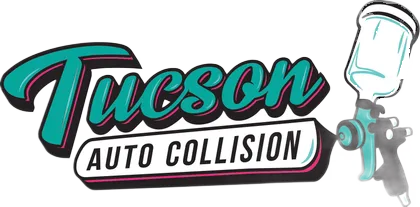2510 W Wetmore Rd Tucson, AZ 85705
Monday - Friday 8am-5pm Closed Weekends
520-292-1330
Blog Layout
What Does Collision Insurance Cover?
What Does Collision Insurance Cover?
When accidents happen, the financial impact can be overwhelming, especially when it comes to vehicle repairs. Collision insurance is one type of car insurance that provides coverage specifically for damage to your vehicle in the event of an accident, whether it’s a single-vehicle incident, a collision with another car, or an object like a fence or tree. Understanding what collision insurance covers—and what it doesn’t—can help you make informed decisions when it comes to selecting insurance coverage and handling claims.
In this post, we'll break down the details of collision insurance, including what it covers, common exclusions, and tips for working with your insurance carrier to ensure smooth claim processing. Tucson Auto Collision Center is here to offer insight into the collision repair process, but please remember: for specific coverage questions, reach out to your insurance provider.
1. What is Collision Insurance?
Collision insurance is an optional type of auto insurance coverage that specifically covers repairs or replacement of your vehicle if it’s damaged in an accident. Unlike liability insurance, which covers damages to others in accidents where you're at fault, collision insurance applies to your own vehicle. This type of insurance is typically recommended for newer or high-value cars, as it helps protect your investment in case of costly damage.
2. What Does Collision Insurance Cover?
Collision insurance typically covers damages to your vehicle caused by:
Collisions with Another Vehicle: If you’re involved in an accident with another car, collision insurance can help cover the cost of repairs, regardless of who is at fault.
Single-Car Accidents: If you hit a stationary object, such as a tree, pole, or fence, collision insurance will usually cover the resulting damage to your vehicle.
Rollovers: In case of a rollover, even if no other vehicle is involved, your collision insurance should cover the damages.
Damage from Potholes or Road Debris: If your vehicle sustains damage from potholes, road debris, or uneven road surfaces, collision insurance can cover these repair costs.
Real-Life Example:
Imagine you’re driving in Tucson and accidentally slide into a concrete barrier. While no other vehicle was involved, your car suffered front-end damage. Collision insurance would kick in to help cover the repair costs, after your deductible.
3. Understanding Deductibles in Collision Insurance
One crucial aspect of collision insurance is the deductible. This is the amount you agree to pay out of pocket before your insurance coverage kicks in. Typically, deductible amounts range from $250 to $1,000, depending on your policy.
Higher Deductibles: A higher deductible often results in lower monthly premiums, but you’ll pay more out of pocket if you file a claim.
Lower Deductibles: A lower deductible increases your monthly premiums but minimizes your out-of-pocket expenses for each claim.
Choosing a Deductible: It’s important to choose a deductible that fits your budget, as you’ll need to cover this cost upfront in the event of an accident.
For instance, if your deductible is $500 and you have a repair that costs $2,000, your insurance provider will pay $1,500 after you cover the $500 deductible.
4. What Collision Insurance Doesn’t Cover
Collision insurance is specifically for collision-related incidents and does not cover every type of vehicle damage. Here are some things it typically does not cover:
Mechanical Failures: Issues unrelated to an accident, such as engine breakdowns, are not covered by collision insurance.
Wear and Tear: Routine wear and tear, like worn-out tires or aging parts, is not included.
Weather-Related Incidents: Damages caused by natural disasters like hail, floods, or storms are generally covered by comprehensive insurance, not collision insurance.
Theft or Vandalism: Collision insurance does not cover theft or vandalism; that falls under comprehensive insurance.
Injury to Yourself or Passengers: Collision insurance does not cover medical expenses. Personal injury protection (PIP) or medical payments (MedPay) coverage is required for those types of expenses.
Example:
If your car is damaged in a flood, even though the damage is significant, collision insurance wouldn’t cover it. You would need comprehensive coverage to handle flood-related claims.
5. Collision Insurance vs. Comprehensive Insurance
It’s important to distinguish collision insurance from comprehensive insurance. While both cover your own vehicle, they apply in different circumstances:
Collision Insurance: Covers accidents involving other vehicles or stationary objects.
Comprehensive Insurance: Covers non-collision incidents like theft, vandalism, fire, and natural disasters.
Many drivers opt for both types of coverage to ensure a broader safety net for unexpected events.
Example Comparison:
If a heavy monsoon storm in Tucson causes a tree branch to fall on your parked car, comprehensive insurance would cover the damage, not collision insurance.
6. How Collision Insurance Works in “At-Fault” and “No-Fault” States
In most states, collision insurance will help cover the costs of damage to your vehicle whether you’re at fault or not. However, how it applies may vary depending on whether you live in an at-fault or no-fault state:
At-Fault States: If you are found at fault in an accident, collision insurance will cover the damage to your vehicle, while liability insurance will cover damages to the other party.
No-Fault States: In no-fault states, your insurance covers your damages and the other party’s insurance covers their damages, regardless of fault.
Arizona is an at-fault state, meaning that if you are in an accident and found at fault, your collision insurance would cover your car’s damages while your liability insurance would cover the other driver’s expenses.
7. The Role of Collision Insurance in Total Loss Situations
If your vehicle is declared a total loss after an accident (meaning the cost of repairs exceeds the vehicle’s value), collision insurance typically reimburses you based on the actual cash value (ACV) of your car. This is the value of your car just before the accident occurred, accounting for depreciation.
Example:
If your car is totaled and deemed to have a market value of $15,000, collision insurance would pay this amount minus your deductible. So, with a $500 deductible, your insurance payout would be $14,500.
8. Working with Tucson Auto Collision Center and Your Insurance Carrier
Navigating the insurance process after an accident can be challenging, especially when dealing with claims and repairs. At Tucson Auto Collision Center, we work with all major insurance carriers to help streamline the process and get you back on the road.
Here are a few tips to make the process as smooth as possible:
File Your Claim Promptly: After an accident, contact your insurance provider to file a claim and provide necessary documentation.
Get an Estimate: Bring your vehicle to a certified collision repair center, like Tucson Auto Collision Center, for an accurate damage assessment.
Understand Your Coverage Limits: Review your policy for coverage limits and exclusions to avoid surprises.
Ask About Approved Repair Shops: Some insurance companies prefer you to use certain repair shops. However, you generally have the right to choose your repair center.
Our team can assist with the estimate and repair process, working closely with your insurance provider to ensure all covered repairs are documented and approved. We’ll keep you updated on the repair progress so you can feel confident that your car is in good hands.
9. Is Collision Insurance Worth It?
For many drivers, collision insurance is a valuable form of protection that can save significant money in case of an accident. It’s particularly recommended for:
Newer Vehicles: Collision coverage helps protect the high value of newer cars.
Financed or Leased Cars: Most lenders require collision insurance as part of a loan or lease agreement.
Areas with High Accident Rates: If you live in an area with high accident risks, collision insurance provides peace of mind.
If you own an older vehicle that’s worth less than the potential annual cost of collision coverage, it may not be necessary. However, for those with newer vehicles or who regularly drive in high-traffic areas, the protection of collision insurance can be well worth the investment.
Final Thoughts
Collision insurance provides essential coverage to protect you financially if your vehicle is damaged in an accident. From fender benders to serious collisions, having this type of coverage can help reduce the financial burden of repairs and get you back on the road faster. If you’re considering collision insurance or have questions about how it applies, reach out to your insurance provider to learn more about your options.
At Tucson Auto Collision Center, we’re committed to delivering high-quality repairs and working with your insurance company to ensure you get the coverage you deserve. With skilled technicians, modern facilities, and a customer-centered approach, we’re here to make the repair process as smooth as possible.
For more information about our services or to schedule an estimate, contact
Tucson Auto Collision Center today!
Tucson Auto Collision Center is a direct repair facility for American Family Insurance and Farmers Insurance. Click the logos below to start your claim with the respective providers.


